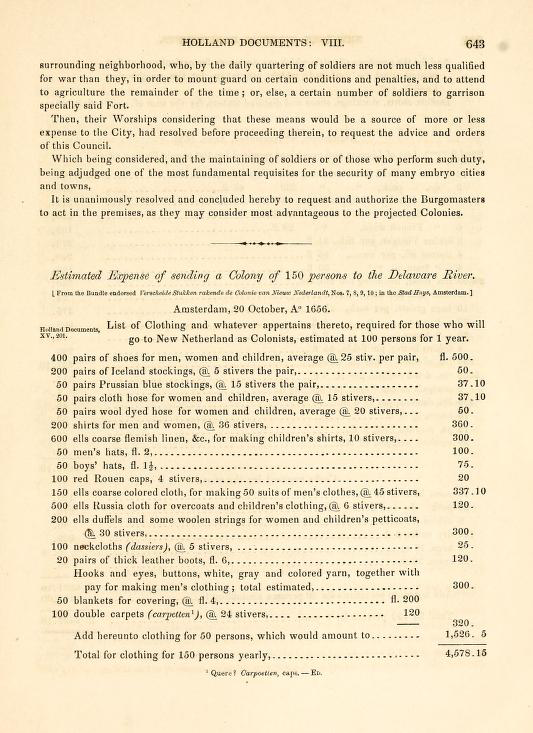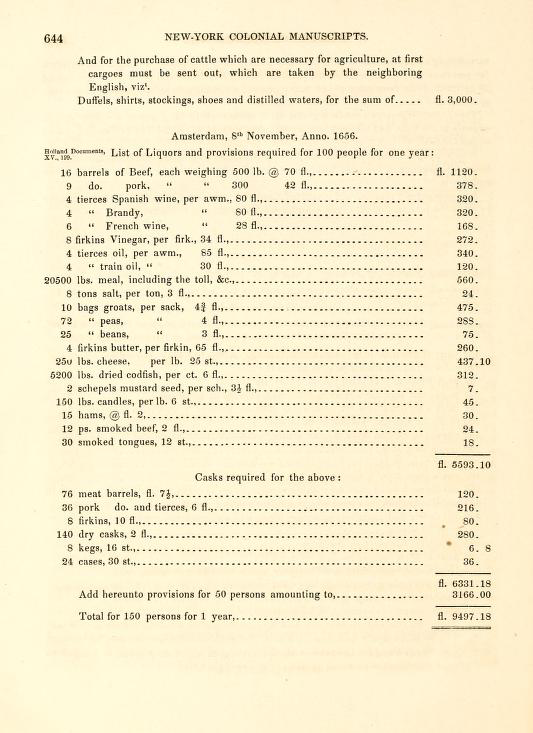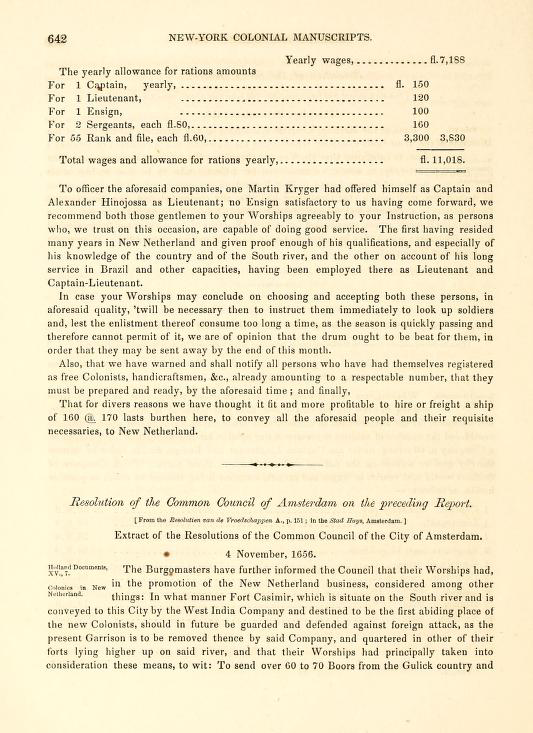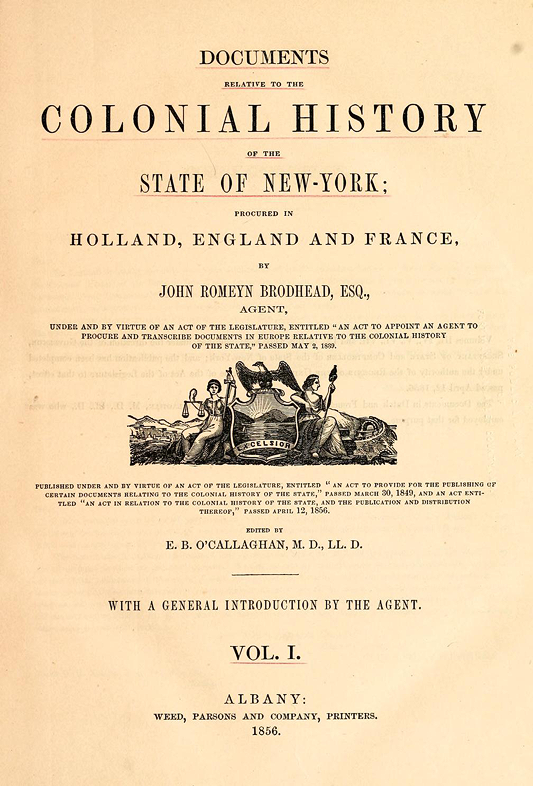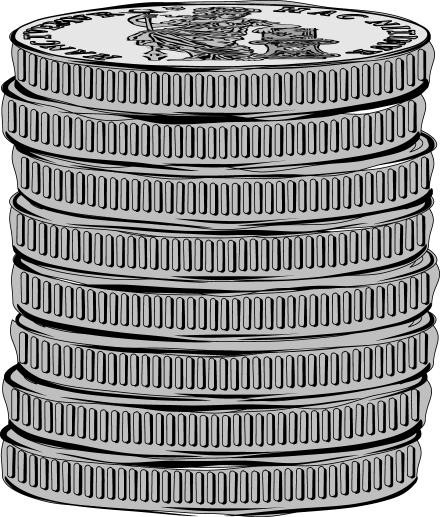Appendix #3: Guilders, Pelts, Wampum... The Cost of Food & Clothing in New Amsterdam
Illustration 3: Guilders, Pelts, and Wampum
The units of the Dutch monetary system commonly referenced in New Netherland transactions were the stuyver, the guilder, and the Carolus guilder. During most the 17th century the coin representing the guilder, the gulden, had a silver content of about ten grams. link
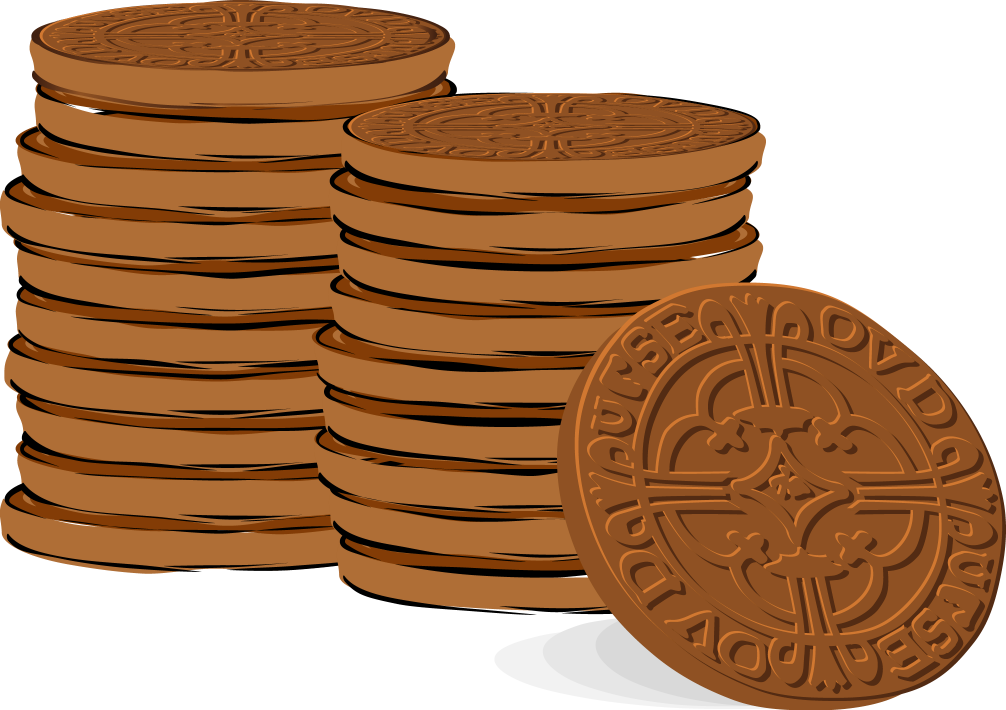
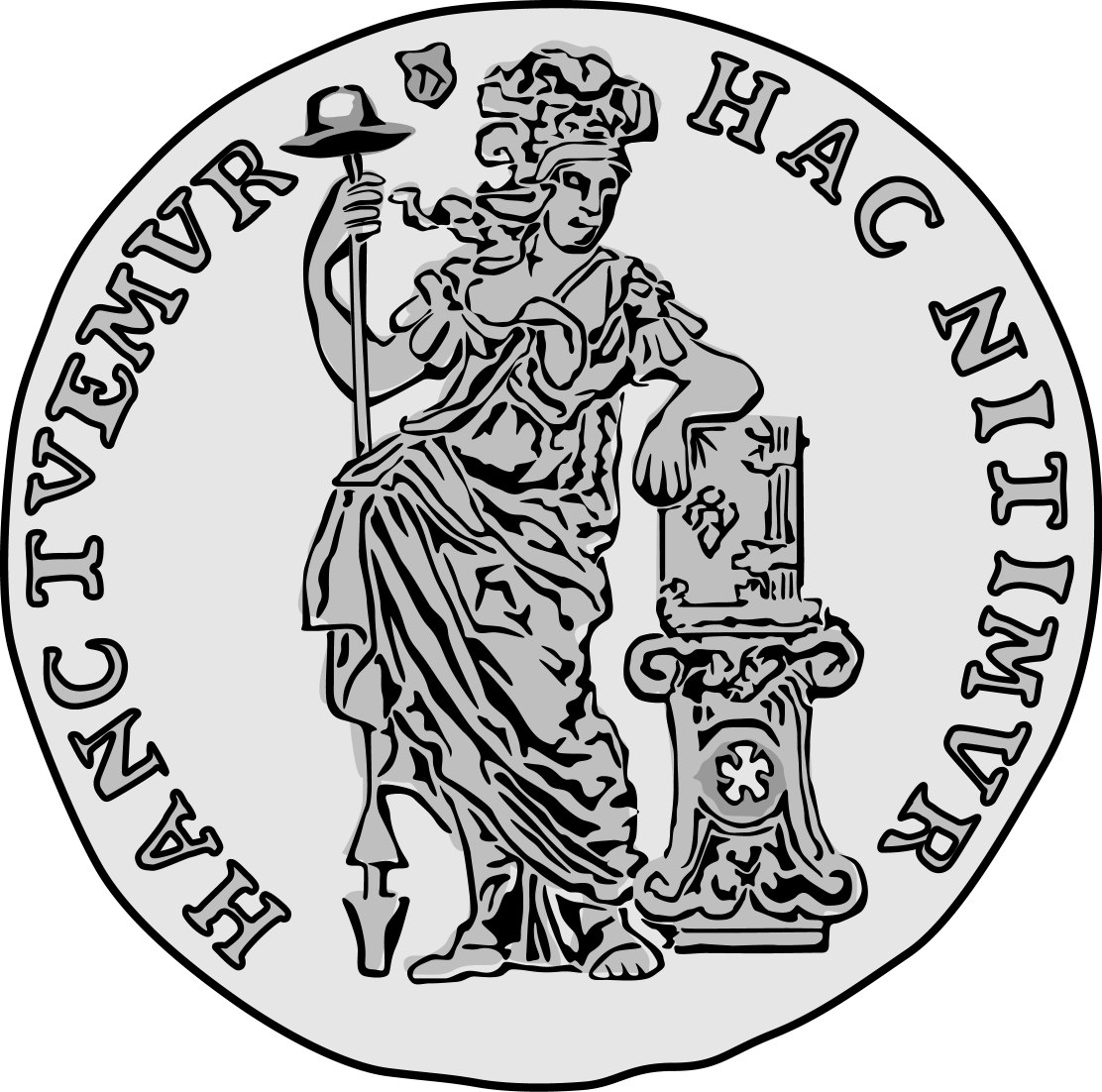
20 stuyvers = 1 guilder
Reflecting its connection with the older currency of Florence, the guilder was also referred to as a florin, the name often used in tax assessments and court cases (e.g., Tax of 1655). The guilder was worth twenty "stuyvers". The coin referred to as the "Carolus guilder" (e.g., in the contract for the Roelantsen house of Illustration 2) also called "daalder" was worth thirty stuyvers. link
16 penningen = 1 stuyver
20 stuyvers = 1 guilder
30 stuyvers = 1 Carolus guilder
Analogous to the old British monetary system before decimalization (where twenty shillings was equivalent to a pound), twenty Dutch stuyvers were equal to a guilder. As a benchmark of trade value, a guilder would buy four pounds of tobacco and five 2-pound loaves of white bread. A sheep might cost twenty to thirty guilders while a two-room house would cost about 500 guilders. Modern comparisons are difficult, the cost of land in Manhattan in the 1650s being much less than today. And, no doubt, colonists given the choice between a loaf of bread and an iPhone would invariably take the bread... even without it being sliced.
Although there were smaller-valued coins in the Netherlands such as the penning, so few made it to Manhattan that the Dutch adopted native "wampum" to alleviate the shortage of coin. link
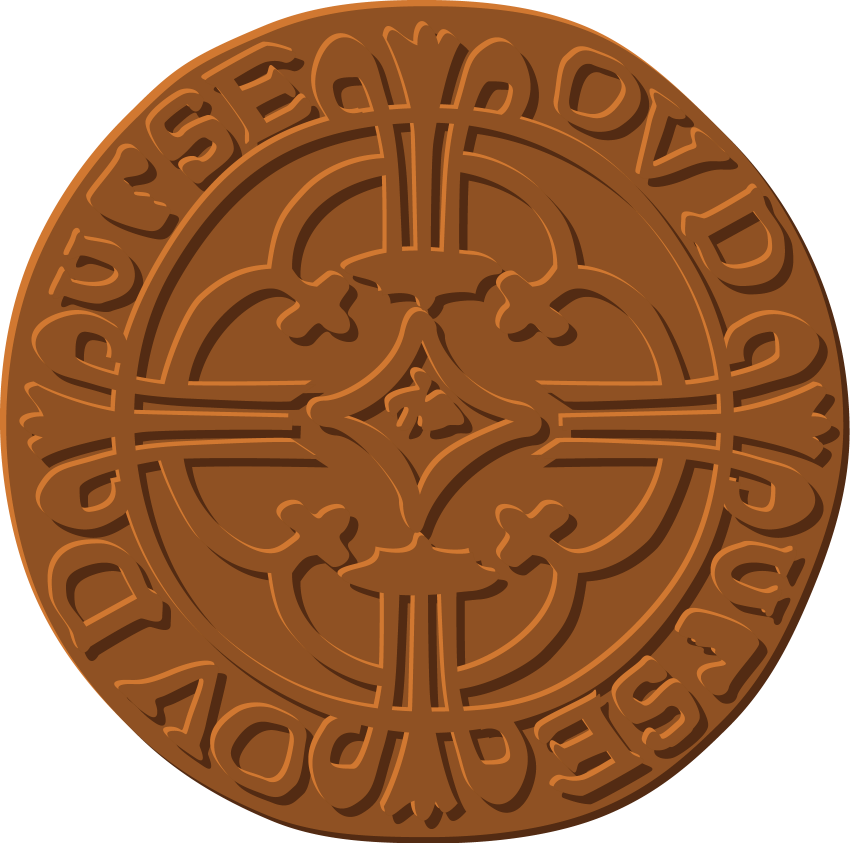
6 - 8 white beads = 1 stuyver
Zewant, or wampum, were strings of beads Native Americans made from clipped and polished shellfish. (whelk and quahog clams). After clipping and polishing, the beads were about a quarter of an inch long and an eighth of an inch wide. A hole drilled longitudinally through the beads enabled them to be strung into various lengths. The value of the wampum depended upon the kind of beads used [with black (purple) beads being worth twice as much as white beads], the number of beads, and the perceptible workmanship in the manufacture. Thus, wampum with polished and strung beads was worth more than loose beads of indeterminate finish. During the 1650s, six to eight white beads was worth one stuyver.
For Native Americans wampum was used for diplomacy, for peace offerings and other intertribal parleys, as gifts and honorifics, in ceremonies sometimes using the beads as cues to a story of an event or history, and sometimes also in trade to balance a commercial exchange. To Dutch colonists wampum looked like money and soon it was incorporated into their barter economy.
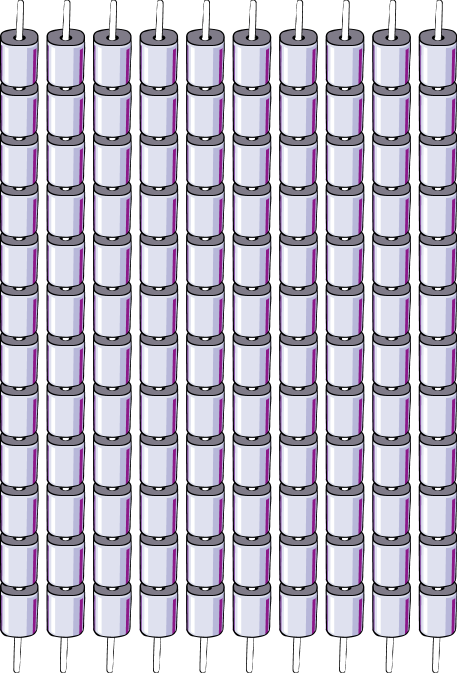

120 - 160 white beads = 1 guilder
6 beads per stuyver and 20 stuyvers per guilder resulted in 120 white beads per guilder circa 1650. Of course, if the belt were all black beads, the same bead count would be two guilders. Rows of beads were connected to form belts of wampum. If a sheep in 1650 cost 30 guilders, it would take a belt of ten rows with each row having three hundred white beads to pay for it (3600). The belt would be about six or seven feet long. However, during the 1650s the supply of wampum began to increase such that its value compared to the guilder dropped dramatically.
Wampum was a soft currency, especially when New England colonists and the Dutch themselves began manufacturing the stringed-beads in large quantities. During the 1650s wampum depreciated in value. While it was a moderate 3% annual inflation between 1650 and 1657, it was manageable. But from 1657 to 1658 the inflation became acute. (See graph) In 1657 it took 1,440 white beads for a beaver pelt; in 1658, 2,240, rampant inflation of 56%. link
Some blamed the English colonists in New England for the oversupply, but the Dutch cottage industry of "minting" wampum in Manhattan also contributed substantially to bead inflation. In ten years wampum value was cut in half, i.e., it would take twice as many beads to buy a sheep (7200) in 1660 as it had in 1650.
Wampum was a soft, inflation-prone currency subject to supply and demand in New Amsterdam. While it had value in trade with other American colonies like Plymouth or Virginia, it had no value in its trade with Holland. The Dutch themselves were looking to beaver pelts for value in commercial transactions with their colony.
The crucial difference between pelts and wampum was that beaver pelts had commercial value in Holland while wampum was just so many stinky beads. Pelts were the key fungible commodity and as such were more stable in the barter/quasi-currency of this period. However, as Jaap Jacobs points out "...beaver pelts too were subject to changes in exchange rates." (Jacobs, Jaap New Netherland (Brill: Leiden-Boston 2005) p195)
In the 1650s and 1660s market conditions determined that:
Although more stable, the pelts were still subject to supply and demand. During the 1650s and 1660s, the value of a merchantable pelt ranged from six to ten guilders. A merchantable pelt was a pelt of sufficient quality such that it could be exchanged for about 8 guilders. This definition may seem somewhat circular, but the Dutch knew a merchantable pelt when they saw one.

| Inflation in Wampum 1641 to 1660 | |||
| 1641 | 80 white beads | 1 guilder | |
| 1650 | 120 white beads | 1 guilder | |
| 1657 | 160 white beads | 1 guilder | |
| 1658 | 224 white beads | 1 guilder | |
| 1660 | 240 white beads | 1 guilder | |
| 4 white beads (polished & strung) | = | 1 stuyver (1641) | |
| 80 white beads (polished & strung) | = | 1 guilder (1641) | |
| 640 white beads (polished & strung) | = | 1 Merchantable Beaver Pelt | |
| 1,200 - 1,440 White beads | = | 1 Merchantable Beaver Pelt (1650) | |
| 600 - 720 Black beads | = | 1 Merchantable Beaver Pelt | |
| 2,240 - 2,560 White beads | = | 1 Merchantable Beaver Pelt (1658) | |
| 1,120 - 1,280 Black beads | = | 1 Merchantable Beaver Pelt | |
The Cost of Food & Clothing in New Amsterdam
